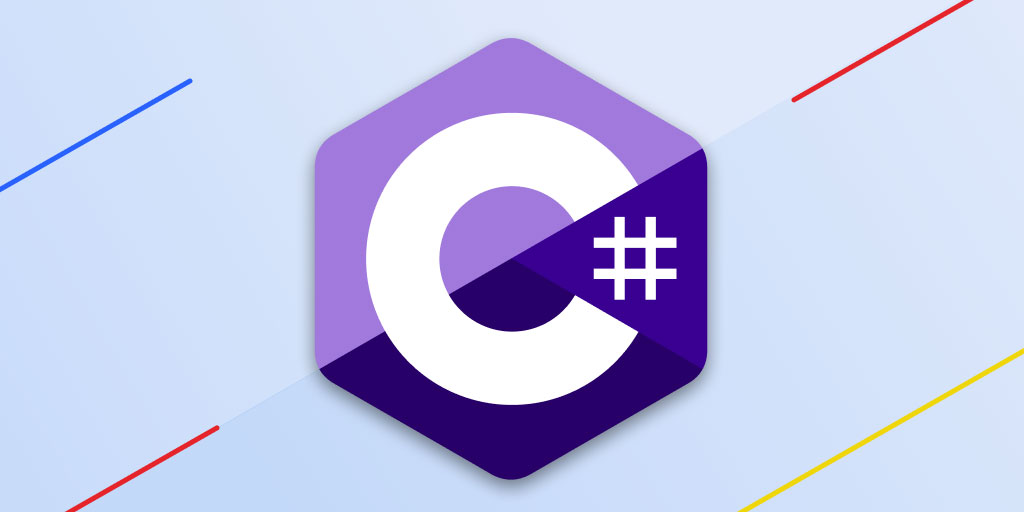 Backend Development
Backend Development
 C#.Net Tutorial
C#.Net Tutorial
 What are C# 8 nullable reference types and how to enable them?
What are C# 8 nullable reference types and how to enable them?
What are C# 8 nullable reference types and how to enable them?
Aug 01, 2025 am 12:26 AMC# 8 Reduces null reference exceptions by introducing nullable reference types. 1. Can be enabled globally in the project file, 2. Can be enabled using the #nullable directive in a single file, 3. Can be enabled via compiler parameters. After enabled, the reference type is not empty by default. It needs to be added explicitly to allow it to be empty. When handling warnings, the actual null value problem should be fixed first, and null value checks should be performed using the null-forgiving operator or pattern matching.

C# 8 introduced nullable reference types as a way to help developers catch potential null reference exceptions at compile time, rather than at runtime. In earlier versions of C# (and many other languages), reference types could always be null by default, which often led to NullReferenceException errors in real-world applications.

With nullable reference types enabled, reference types are treated as non-nullable by default , and you have to explicitly declare when a reference type can be null. This adds a layer of safety and clarity to your code.
How to enable nullable reference types
There are a few ways to enable nullable reference types depending on your project and preference.

1. Enable globally in the project file
The most common and recommended way is to enable nullable reference types for the entire project by editing the .csproj file:
<PropertyGroup>
<TargetFramework>net6.0</TargetFramework>
<Nullable>enable</Nullable>
</PropertyGroup>This enables nullable reference types across all files in the project. It's simple and effective for new or existing projects.

2. Enable per file using a directive
If you want to control it on a per-file basis, you can use the #nullable directive at the top of a .cs file:
#nullable enable
This is useful during migration or if you want to gradually adopt the feature in legacy code.
3. Enable via compiler options
You can also enable the feature via compiler options when building from the command line:
csc /nullable Program.cs
This is less common unless you're compiling manually or in specific CI/CD scenarios.
Understanding the basics of nullable reference types
Once enabled, the compiler treats all reference types like string , object , or custom classes as non-nullable by default . If you want a reference type to allow nulls, you must explicitly add a ? after the type:
string name = null; // Warning: Cannot assign null to non-nullable reference string? name = null; // OK: This string can be null
This distinction helps you write safer code by making nullability part of the type system.
Key behaviors:
- Assigning
nullto a non-nullable reference type generates a compiler warning. - You can suppress warnings using null-forgiving operator (
!), likename!.Length, but use this sparingly. - You can annotate APIs to help tools and analyzes understand null expectations better.
How to deal with warnings and common patterns
Enabling nullable reference types might cause a lot of warnings in existing codebases. Here's how to handle them effectively.
Fix actual issues
Start by reviewing the warnings and fixing actual null violations. For example:
string user = GetUser(); // Warning: May return null int length = user.Length; // Warning: Possible null reference
If GetUser() can return null, update it to return string? , and handle the null case properly:
string? user = GetUser();
if (user != null)
{
int length = user.Length; // Safe access
}Use null-forgiving operator when appropriate
Sometimes the compiler can't infer that a value isn't null, but you know it isn't. In those cases, you can use the null-forgiving operator:
string user = GetUser()!;
Use this only when you're certain the value won't be null, or you risk reintroducing runtime errors.
Use pattern matching and null checks
Take advantage of pattern matching and built-in null checks to write cleaner and safer code:
if (GetUser() is string { } user)
{
Console.WriteLine(user.Length);
}This combines null checking and assignment in a single line.
Summary
Enabling nullable reference types in C# 8 helps reduce null-related bugs by making non-null the default for reference types. You can enable it globally, per file, or via compiler flags. Once enabled, the compiler will warn you when you try to assign null to non-nullable references, and you can use ? to indicate nullable ones.
Fixing warnings often means updating method return types, using null checks, or applying the null-forgiving operator where appropriate.
Basically that's it.
The above is the detailed content of What are C# 8 nullable reference types and how to enable them?. For more information, please follow other related articles on the PHP Chinese website!

Hot AI Tools

Undress AI Tool
Undress images for free

Undresser.AI Undress
AI-powered app for creating realistic nude photos

AI Clothes Remover
Online AI tool for removing clothes from photos.

Clothoff.io
AI clothes remover

Video Face Swap
Swap faces in any video effortlessly with our completely free AI face swap tool!

Hot Article

Hot Tools

Notepad++7.3.1
Easy-to-use and free code editor

SublimeText3 Chinese version
Chinese version, very easy to use

Zend Studio 13.0.1
Powerful PHP integrated development environment

Dreamweaver CS6
Visual web development tools

SublimeText3 Mac version
God-level code editing software (SublimeText3)

Hot Topics
 Creating and Applying Custom Attributes in C#
Jul 07, 2025 am 12:03 AM
Creating and Applying Custom Attributes in C#
Jul 07, 2025 am 12:03 AM
CustomAttributes are mechanisms used in C# to attach metadata to code elements. Its core function is to inherit the System.Attribute class and read through reflection at runtime to implement functions such as logging, permission control, etc. Specifically, it includes: 1. CustomAttributes are declarative information, which exists in the form of feature classes, and are often used to mark classes, methods, etc.; 2. When creating, you need to define a class inherited from Attribute, and use AttributeUsage to specify the application target; 3. After application, you can obtain feature information through reflection, such as using Attribute.GetCustomAttribute();
 Designing Immutable Objects and Data Structures in C#
Jul 15, 2025 am 12:34 AM
Designing Immutable Objects and Data Structures in C#
Jul 15, 2025 am 12:34 AM
The core of designing immutable objects and data structures in C# is to ensure that the state of the object is not modified after creation, thereby improving thread safety and reducing bugs caused by state changes. 1. Use readonly fields and cooperate with constructor initialization to ensure that the fields are assigned only during construction, as shown in the Person class; 2. Encapsulate the collection type, use immutable collection interfaces such as ReadOnlyCollection or ImmutableList to prevent external modification of internal collections; 3. Use record to simplify the definition of immutable model, and generate read-only attributes and constructors by default, suitable for data modeling; 4. It is recommended to use System.Collections.Imm when creating immutable collection operations.
 Handling Large Datasets Efficiently with C#
Jul 06, 2025 am 12:10 AM
Handling Large Datasets Efficiently with C#
Jul 06, 2025 am 12:10 AM
When processing large amounts of data, C# can be efficient through streaming, parallel asynchronous and appropriate data structures. 1. Use streaming processing to read one by one or in batches, such as StreamReader or EFCore's AsAsyncEnumerable to avoid memory overflow; 2. Use parallel (Parallel.ForEach/PLINQ) and asynchronous (async/await Task.Run) reasonably to control the number of concurrency and pay attention to thread safety; 3. Select efficient data structures (such as Dictionary, HashSet) and serialization libraries (such as System.Text.Json, MessagePack) to reduce search time and serialization overhead.
 Writing Maintainable and Testable C# Code
Jul 12, 2025 am 02:08 AM
Writing Maintainable and Testable C# Code
Jul 12, 2025 am 02:08 AM
The key to writing C# code well is maintainability and testability. Reasonably divide responsibilities, follow the single responsibility principle (SRP), and take data access, business logic and request processing by Repository, Service and Controller respectively to improve structural clarity and testing efficiency. Multi-purpose interface and dependency injection (DI) facilitate replacement implementation, extension of functions and simulation testing. Unit testing should isolate external dependencies and use Mock tools to verify logic to ensure fast and stable execution. Standardize naming and splitting small functions to improve readability and maintenance efficiency. Adhering to the principles of clear structure, clear responsibilities and test-friendly can significantly improve development efficiency and code quality.
 Creating Custom Middleware in ASP.NET Core C#
Jul 11, 2025 am 01:55 AM
Creating Custom Middleware in ASP.NET Core C#
Jul 11, 2025 am 01:55 AM
Create custom middleware in ASP.NETCore, which can be implemented by writing classes and registering. 1. Create a class containing the InvokeAsync method, handle HttpContext and RequestDelegatenext; 2. Register with UseMiddleware in Program.cs. Middleware is suitable for general operations such as logging, performance monitoring, exception handling, etc. Unlike MVC filters, it acts on the entire application and does not rely on the controller. Rational use of middleware can improve structural flexibility, but should avoid affecting performance.
 Best Practices for Using LINQ in C# Effectively
Jul 09, 2025 am 01:04 AM
Best Practices for Using LINQ in C# Effectively
Jul 09, 2025 am 01:04 AM
The following points should be followed when using LINQ: 1. Priority is given to LINQ when using declarative data operations such as filtering, converting or aggregating data to avoid forced use in scenarios with side effects or performance-critical scenarios; 2. Understand the characteristics of delayed execution, source set modifications may lead to unexpected results, and delays or execution should be selected according to requirements; 3. Pay attention to performance and memory overhead, chain calls may generate intermediate objects, and performance-sensitive codes can be replaced by loops or spans; 4. Keep the query concise and easy to read, and split complex logic into multiple steps to avoid excessive nesting and mixing of multiple operations.
 Benchmarking and Profiling C# Code Performance
Jul 03, 2025 am 12:25 AM
Benchmarking and Profiling C# Code Performance
Jul 03, 2025 am 12:25 AM
C# code performance optimization requires tools rather than intuition. BenchmarkDotNet is the first choice for benchmarking. 1. Automatically handle JIT warm-up and GC effects by scientifically comparing the execution efficiency of different methods; 2. Profiling using tools such as VisualStudio, dotTrace or PerfView to find the truly time-consuming "hot spot" functions; 3. Pay attention to memory allocation, combine [MemoryDiagnoser], DiagnosticTools and PerfView to analyze GC pressure, reduce object creation in high-frequency paths, and give priority to using structures or pooling technology to reduce GC burden.
 Mastering C# Reflection and Its Use Cases
Jul 06, 2025 am 12:40 AM
Mastering C# Reflection and Its Use Cases
Jul 06, 2025 am 12:40 AM
Reflection is a function in C# for dynamic analysis and modification of program structures at runtime. Its core functions include obtaining type information, dynamically creating objects, calling methods, and checking assembly. Common application scenarios include: 1. Automatically bind the data model, such as mapping dictionary data to class instances; 2. Implement the plug-in system, loading external DLLs and calling its interface; 3. Supporting automated testing and logging, such as executing specific feature methods or automatically recording logs. When using it, you need to pay attention to performance overhead, encapsulation corruption and debugging difficulties. Optimization methods include caching type information, using delegates to improve call efficiency, and generating IL code. Rational use of reflection can improve the flexibility and versatility of the system.





